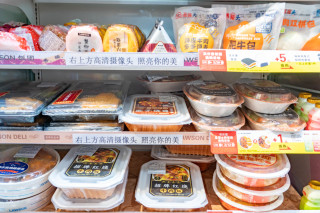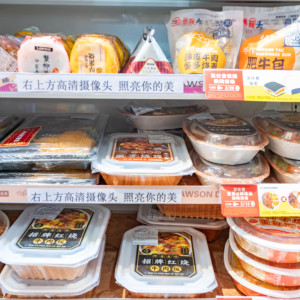By MA Yue
Restaurant-grade ready-to-cook meals are all the rage. But why are so many sellers making variations of the same dozen dishes? The supply chain is the key.
Catfish simmered with pickled greens, crispy-skinned tilapia in sizzling chili oil, and crawfish braised with garlic. These days, even a terrible cook can enjoy restaurant dishes at home. No, not with food delivery. Ready-to-cook is one of, if not the hottest, food trend in China right now.
New technology for old recipes
All kinds of players have joined the game – chains with hundreds of locations, food conglomerates that traditionally supply restaurants, and more recently, online grocers. Each has, or claims to have, its own advantage, be it name recognition, vertically integrated supply chain, or data-derived customer insights. But paradoxically, they all seem to make the same dozen meals.

Any upgrade or “innovation” tends to be a new variation of the same old recipe. Everyone talks about looking for the next hit, but old favorites are the dish of the day.
“A hit doesn’t come out of nowhere. A new product takes a ton of planning,” says OU Houxi, who is in charge of ready meals at online grocer Dingdong Maicai. “We need to consider whether customers will like it, and if so, how the supply chain works, taste testing, costs, price, when to launch it and how to market it, etc.”
Tried-and-tested classics are most likely to become made into ready meals. That’s why so many of them are spicy – Sichuan food is by far China’s favorite out-of-home dining option. Demand is almost ensured, and the restaurants or suppliers, already have the ingredients ready to hand.
Don't try this at home
The dishes tend to be hard to prepare at home but easy enough for commercial kitchens. Even experienced home cooks are willing to pay for the wow factor. Take the example of pork tripe and chicken stew, a Hakka dish.
Preparation of tripe is neither fun, fast nor easy. It involves scraping and blanching the tripe to get rid of any stink and simmering it with bone-in chicken overnight. CP Group, which has its own meat packing facilities, started out with traditional tripe and chicken stew, but quickly "innovated" two more – tripe and chicken stew with black pepper and a hot and sour version. Each comes in family and single-serve packs.
In fact, offal in general makes regular appearances in ready-to-cook dishes. They are versatile and much loved, but difficult to clean. Food conglomerate New Hope this year launched a chitterlings series that includes three versions – a soy-braised appetizer, a five-spice stew, and a hot-pot-ready unflavored one.
Recipe developers have come up with a set of standards that measure the shape, smell, and texture of processed intestines in quantifiable ways. Total sales exceeded 140 million yuan (US$20 million) in the first half of this year and are expected to reach 400 million by the end of the year. That's an awful lot of offal.
Making a difference
The problem with crowd-pleasers is that everyone is making them. Food companies will do or say almost anything to make their version more memorable.
Dingdong Maicai claims that its tripe chicken stew uses the most tender tip of pig stomachs for the tripe, juicy thigh meat for the chicken, and overnight-simmered bone broth for the soup. Guolian Aquatic says its chili-grilled fish went through three iterations to make the fish slices silkier and the skin crispier. Now it sources tilapias from Zhangjiang, whose meat retains a springy texture and does not become fishy after reheating.
Guolian Aquatic chose two popular flavors, spicy and garlic, for its first chili-grilled fish. But customers find it hard to tell the difference from other brands. Now there’s a green peppercorn version. A pineapple-garnished grilled fish is in the pipeline.
Others try to distinguish themselves with smart packaging and easy cooking, or in some cases, no cooking at all. Dingdong Maicai packs its dishes in stove-top-ready foil boxes. Some of its dishes, such as crawfish, can be bought in three ways – frozen, refrigerated (stove-top ready), or ready to eat.
Taste of close to home
They need to be processed in different facilities. The frozen version, friendly for long-distance shipping, is made in Hubei where land and labor are cheaper. The factory is equipped with flash-freezing machines and is located right off the highway. The more perishable versions have to be made near where its customers are, to shorten the time spent on the road. The company eventually chose Xuyu, the country’s largest crawfish producer, so that the meat is cooked less than thirty minutes after being harvested. Its location on the southeast coast also brings the products closer to demand.
Customers in the region love marinated fish and shrimp as cold appetizers. When they peel the shells and suck the flesh, probably not many have thought about the science and logistics behind it.





